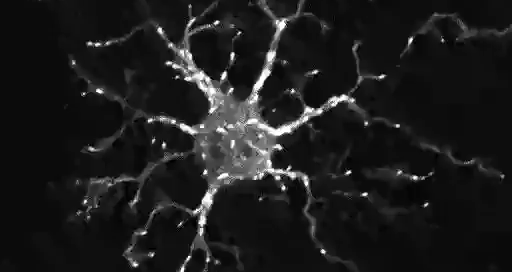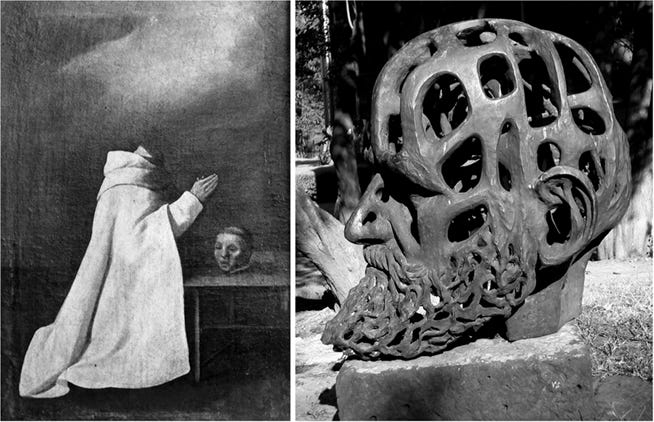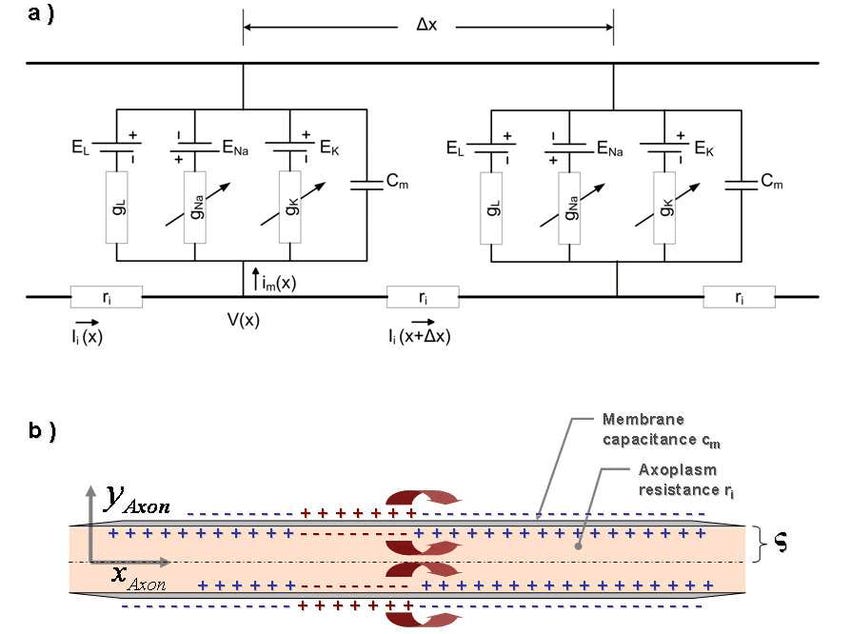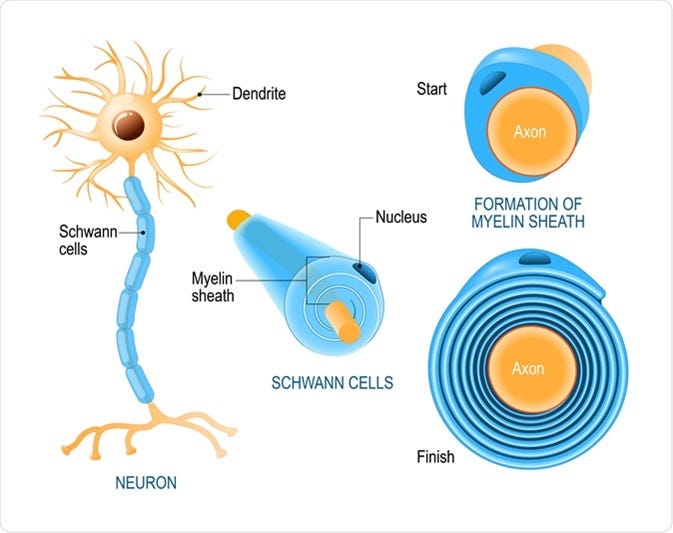Left: Fray Pedro de San Dionisio, Francisco de Zurbarán.
Right: Don Quixote, Museum of Arte Moderno in Mexico.
Source
For being the most advanced thing in the universe, people don’t seem to think about their brains very often. I say thing, because calling it a machine is unwise, and calling it a tool is suspect. It is a thing, for multiple definitions of the word. A thing insofar as it cannot be understood fully how it works, and thing evokes that mystery. It is also a thing in that it produces consensus just as political things did in medieval England and elsewhere. Yet, for most, it’s the thing they can’t see, touch, smell, taste, or hear, because it’s what’s doing those thing. The brain has no pain receptors, or any internal sensory systems at all. The veins which feed it do, and things like headaches are generally the pain in these tubes, not your brain. The scalp and bone all feel, which is why hitting your head hurts. But the brain itself appears totally detached from the cosmos, floating around in its special fluids, getting wrinkles trying to figure out everything else but itself - materially, at least. Figuring out itself, with the body, as a system has taken up a great deal of what all our brains do.
Whatever it is, somehow our intelligence is a result, as well as our emotions, suspicions, and most of the things that make us “us”. It’s not everything, of course. Without your face, could you understand yourself as well as you do? Without your senses would you be you? In that sense, the brain’s tools - recognizing again that the brain itself is not a tool - are vital for it to be more than cells floating around in a medium.
If we run some basic maths, however, a lot of this thing doesn’t make any sense. Supposedly, you have somewhere around 100,000,000,000 neurons. Just from that number alone you should be very suspicious. After all, if each neuron is akin to a computer bit, your brain would only have 12.5 gigabytes of information. Akin to a mid-2000s laptop hard drive. Does it make sense your favorite 4k HD movie stores more data than your entire existence? Something’s off.
First let’s ask what exactly is a neuron? Is it akin to a bit? Technically speaking, a neuron is just a nerve cell that’s specialized at its job. If we count every nerve in the human body in some vague attempt to boost the possible bits - knowing full well most of those nerves can’t actually do the task - we can find 7 trillion nerves total, which still only nets us just under 1 TB of data power. Quite depressing.
If you’ve forgotten your highschool biology (many have these days, after all), a neuron is a rather odd cell. Ordinarily you may want to imagine it as a point in a network, but it comes equipped with relay mechanisms and capacitors, making it a bit more sophisticated. Neurons have short receiving dendron which can be thought as a receiver, and very long forward firing axon which can be thought of as a messenger. If electrical engineering is your thing this ought to sound familiar - They even use specialized Schwann cells seemingly as wire insulation.
In terms of how these little fingery boys work, firm data is complicated. For instance, data seems to suggest we can only remember about 150 people on a rotating basis. This is known as Dunbar’s Number. Not a lot. However, if we take an average normie, and a Shakespeare scholar who’s memorized the entire anthology, both will still only be able to maintain this rotating clan of characters. So if Dunbar’s number doesn’t change for those will minds full of information compared to those not, we can gauge from this that different parts of the brain specialize in specific tasks. The social memorizing part remains consistent with or without pub quiz data floating about.
Still, if we have a partitioning, we have an even bigger problem: Even fewer neurons to measure for human intelligence. In fact, if we look at the parts of the brain that are responsible for higher level of cognizant thinking - the Cerebral Cortex - this region only has roughly 15 billion neurons, or 1.5 GB if each is bit. A tenth of our original size calculation, and meaning that your phone’s micro-sd card could hold dozens of consciousnesses, which it demonstrably cannot.
We clearly need to approach this question in some other way than a neuron-bit parity.
Conel and Le(1941, 1967
Let us suppose, instead, that perhaps a neuron is more like a byte than a bit - that being, each neuron can produce some kind of natural and intuitive language that all other neurons can understand - perhaps the oldest language in the universe, considering it would have been electromagnetically spoken for a bit over 500 million years (Incidentally, it is worth noting that brains have only been around for 1/30th the age of the universe, so far as we know).
Whereas a bit can only be 1 or 0, also known as on or off, a byte has multiple states it can exist in depending on how many states it is made to possess. Generally, 8 states is the standard. Thus, an 8 state byte can store 64 different states, as opposed to having 64 bits that can only contain one of two states.
In a flat 2d universe, it is possible to have bits and bytes take up the same surface area. Thus, it would always be prudent to use a plane of byte storing devices rather than bit ones. In our 3d universe, bit and byte storage can come fairly close still, so many of the rules still apply. In some regards, this is why “quantum computing” is so interesting. Taking away the buzz words, all this means is that you are taking an atom and, instead of treating it as an on-off binary, you are looking at its quantum characteristics which can include a variety of fractional spins, orientations, and other data points that allow it to possess far more data storage capacity in the same space constraint - so long these vectors are clear and not tangled up with each other. One can imagine this in the form of a 3-axis molecule in a magnetic field. This can produce 3 binary states, or 6 bits of information within itself acting as a byte. The number of bits you want to shove into this can expand dependent on magnetic axis to spin along.
Of course, current quantum computing research is far simpler, dealing with one plane with spin states oriented to it, allowing data to be stored as individual bits, and each plane perhaps being a byte that can contain hundreds of bits.
You may have come to understand things which contain the word “quantum” involve faster-than-light instant communication. This is a myth propagated by rather attention-starved celebrity “scientists”. Quantum Entanglement, the proper term, merely means that if you put two things in a box and shake them up, taking one out means you know what the other is instantly. No information is transmitted instantly, it’s just that you know what is in the box if you take out its entangled partner. Thus, you could use this information as a cryptological key, not some magical FTL communication. However, there is still some curiosity with Quantum Entanglement in terms of deterministic outcomes. You may be familiar with the double slit experiment, for instance, whereby a particle acts like a wave and interacts with itself. This mysterious aspect of quantum mechanics is important to remember as we take these quantum lessons into biology.
Returning to our brains, you ought to now be able to imagine the neuron as more a byte than a bit. However, where is the bit? After all, the neuron isn’t quite as small as a subatomic particle with spin. That’s where things get tricky, and possibly creepy.
The tricky part is that there are a few different possibilities of where the bits could be, but the creepy part is that it’s also possible multiple possibilities are right… Confused? It helps to understand information as scale. If we consider the location of the bit as some kind of organelle of the cell, then the rules of macro-physics play out rather deterministically. If, however, the rules of micro-physics - quantum mechanics - are where the bit is stored, then we have a rather non-deterministic approach that very well could reveal how free will can exist in an otherwise deterministic universe.
For the macro bit, neurons contain a number of neurotransmitters - hundreds of them. Within a network of a few neurons, each can maintain hundreds of these signal loops. Most are likely storing various sensory or hormonal regulations information, but some evidence suggests there’s enough there to store memories of some sort as well. When scientists shock these networks, it often forces the subject to recall things stored in these electro-chemical loops. If we have 100 neurotransmitters on average for neuron cells, we can calculate the original 15 billion higher-cognitive neurons are processing upwards of 1.5 trillion bits of information, or 100 GB of information. Well, still rather low, isn’t it?
For the micro bit, if we look within the neuron itself we find a possible answer: microtubules. These are towering structures that help stabilize the cell, but the curious thing is that they have a bit-like nature. An on, off, and end-of-line state. Possible quack Stuart Hameroff did a rather curious TED talk about this some time ago. What I find rather interesting are his diagram of how these tubules work:
More of Hameroff’s writing here
Hameroff theorizes that these are actually the place where memories are stored, with the macro bits being more related to our instincts. Each tubular data core would be a byte consisting of hundreds to thousands of individual bits. They would be firing off semaphore-like signals. The amount of data each neuron could store would be in the terabyte range. This really does solve the data capacity problem, but there’s a catch. These tubules are small enough to feature some of the quantum mechanics of wave-particle duality mentioned prior. In simple terms, Hameroff surmises we are biological quantum computers. And one of the consequences of that would be a non-deterministic system derived from a loophole in an otherwise deterministic universe.
I like Hameroff’s theory because of its novelty. The idea that our brains had to hack some underlining feature at the very micro in order to pull up free will into the macro is, in a strange way, creepy. The neuron becomes something of a quantum magnifier so as to force non-deterministic data into the macro deterministic world. However, pause to think about that for a moment. Because, as far as we can tell, humans would be the only species to have developed the capacity to use microtubules for conscious free-will decision making. Most other species have microtubules in their neurons too yet seem worlds apart from us. Perhaps some have similar mechanisms, who knows? But this would suggest these structural pillars of the cell are nothing more than pillars for them, but the human brain somehow found a way to put its writing on the wall of these pillars as a cheap and easy way to jump intelligence by powers of ten, if not thousands. But, if that is true, that would mean we are something of a foil on an otherwise deterministic universe, bleeding the chaos of the micro into the macro. That may have some unusual consequences in the long term.
Of course, if Hameroff is actually a quack, we return to the initial data limitation problem. Perhaps there really is some kind of innate conscious materialism in the cosmos and our brains are merely antennas for us to operate this body. Or perhaps the soul just cannot be a material and we will never be able to understand how so much can fit into so little a storage space. These questions are hard, and the solutions can have wholesale consequences as to if we are truly free will creatures, or merely believe we are as a coping mechanism.
My own personal bias: I don’t really believe in free will. Even in most religions, mankind’s brain is ensnared by some kind of sin or devil. So regardless of what those religions say, by their own holy texts their will is corrupted at least in part. If anything, we can only approach free will by gradually mastering ourselves and programming ourselves to do better, or seeking something greater than us to snag us away from our nature. You may see here the age-old debate in the west of works vs grace. Indeed, it is such a debate to be had. But it may require we figure out how and where our conscious selves are.
The brain is certainly a processing center for our urges and fleshy desires, but as to a storage center? All data says there’s simply not enough room to store our souls. So while our fleshy desires may be in there, our conscious and thinking minds can’t fit. Where are we, then? Are we hidden away behind the veil of reality, operating our bodies through an antenna-like brain? Or are we the quantum uncertainty of entangled molecular bricks deep within the neuron?
What do you think, dear reader?













"Are we hidden away behind the veil of reality, operating our bodies through an antenna-like brain? Or are we the quantum uncertainty of entangled molecular bricks deep within the neuron?"
This question has theological implications, so theology might provide some clues to the answer as well. Scripture teaches that to be embodied is our natural state (we are created originally with bodies, and in the New Heaven and New Earth we have resurrected bodies free of the problematic sin corruption you mention at the beginning.)
At the same time, scripture takes as an assumption that "we" can exist separately from those bodies in the post-death spiritual state, unless one ascribes to some kind of quantum-enhanced theory of soul sleep. Otherwise we cannot exist *solely* within our neurons, for those will someday die and decay, but we will persist in some other state waiting for all things to be made new.
There is also the widely-attested paranormal phenomenon of out-of-body-experiences, anything from temporary operating table deaths to astral projection. Unless we are to summarily dismiss every testimony of such, we must conclude that there is indeed some portion of "us" that can observe and be aware of itself which is not tied to the physical neurons. It seems that there is a ghost in the shell, which can leave the shell and exist apart from it without suffering total loss of self, but that is neither the original natural order of things nor, if scripture is to be believed, the final eternal state of them.
One solution would be that we exist in a higher dimension that we are currently capable of observing. (Personally I think this must be the case.) What might be muddying the waters of free will vs. determinism is if we are fated to be translated into higher dimensions of potentiality beyond which point free will would not be an illusion, and that timeless free will belonging to our future (but same) selves causes what look like paradoxes at our current deterministic level of dimensional awareness.
So iff* the Son sets you free, you will be free indeed.
(*spelling intentional)
Neurons have dynamic information storage capacity; they are constantly forming and pruning connections (synapses). While a neuron has only one axon, its "decision" to fire (propagate an axon potential) or not is a summation of excitatory and inhibitory inputs from many other neurons.
Memories are most probably encoded in circuits of neurons which activate each other; some of the circuitry is consistent, but other pieces of it are unique to each memory.
1 neuron = 1 bit/byte isn't really a useful analogy.